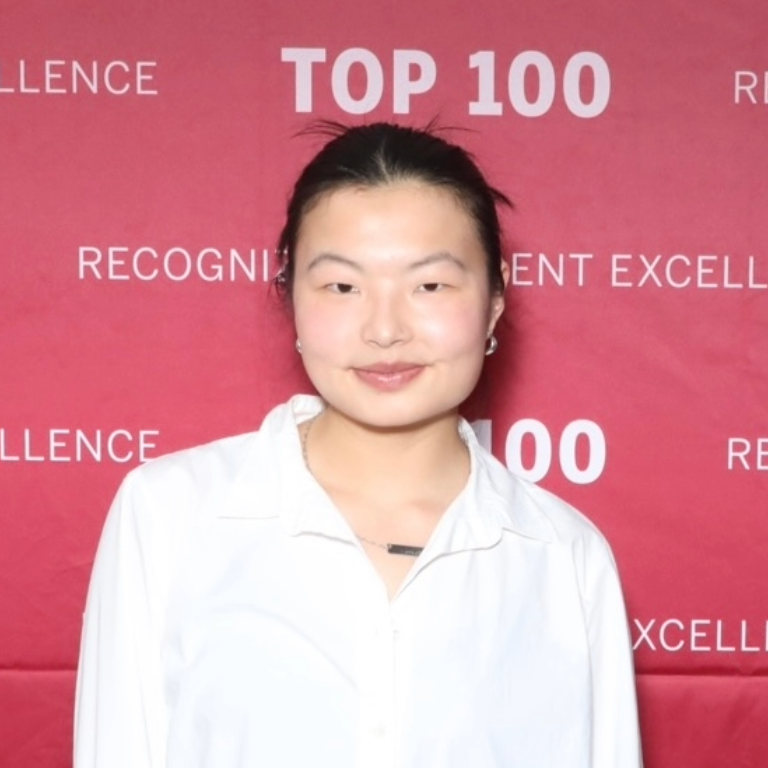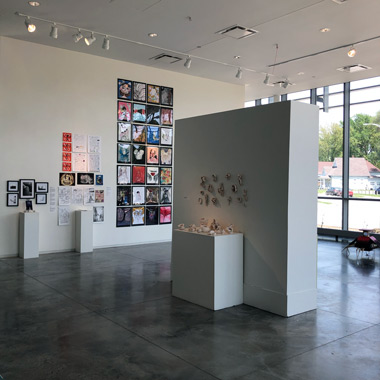"Meet Your Tech" is a Q-and-A series that introduces current and prospective students to Herron's studio and lab technicians, who are multi-faceted artists and individuals.
Ray Duffey should be at the top of Herron's list of people to learn from when you need guidance with a studio art assignment involving hand and power tools, machines, or wood.
Since 2011, Duffey has taught foundation studies and furniture design courses, helped students meet all of their three-dimensional design needs, and oversaw a safe, hands-on learning environment. He is the Director of Safety Curriculum and Shop Manager. He is also a Herron alum, who graduated in 2011 with an M.F.A. in visual art, with a passion for sustainable furniture design practices – and a musician.
HERRON: What drew you to an artistic practice rooted in sustainability?
RAY DUFFEY: I basically cut my teeth working in woodshops -- cabinet shops, custom furniture. That was between undergrad and grad school. I noticed the amount of waste that can be generated through commercial projects. I won't say I had a hoarder's mentality -- instead, maybe a FARMER'S mentality: "If there's something [left over] ... maybe I can use this later." I like forests, as well, of course.
I definitely use raw lumber that was harvested sustainably. Seeing materials that will just be thrown in the trash drives me crazy. I take a lot of pride in the pieces that I make. Basically, I try to use sustainability as a business model. I also love what it brings aesthetically to a piece. Each piece becomes an individual work. I can also cut it, sand it, and make it brand new.
HERRON: You guide students in their artistic endeavors, provide maintenance for the wood shop, serve as safety director for the entirety of Herron, and somehow maintain your own practice. How do you manage all these tasks and find creative inspiration for your own work?
DUFFEY: I ask myself that a lot! Every week. Maintaining your own practice is the hardest thing for everyone who works here. It's a grind. I get asked by students all the time: "You're making your own work?! How are you doing that?" Finding time where things aren't chaotic ... maybe my partner says, "You know what, you need to get some 'you' time in the studio this week." That's what it takes.
If you don't make your own time, it's not going to happen. That's where you find yourself sometimes: you're doing things for everyone else, you're doing your job, but you realize you've got all this paid time off built up. Summer is a good time [to make new work], too. It's a struggle.
HERRON: We hear that you co-founded a letterpress printing studio after graduating with a bachelor's degree from North Carolina State University. Did you study printmaking?
DUFFEY: Straight out of undergrad, my friend Dave Wofford and I started Horse and Buggy Press in Raleigh, N.C., now in Durham. I got into letterpress printing through my majors in undergrad, and Dave who graduated before me. I started out in graphic design – [Herron alumnus] Andrew Blauvelt was my advisor – but I graduated with the College of Design's Art + Design degree.
I focused mainly on two-dimensional work, which led me to block printing. Woodcuts really piqued my curiosity between 2-D and 3-D work. They're essentially shallow relief carvings that can produce a print. Letterpress was a natural fit for combining typography with original imagery in a very tactile and immediate way. Dave and I made a lot of poster show prints for my bands.
HERRON: You worked as a custom furniture and cabinet maker in North Carolina for three years before you enrolled at Herron to earn your master's degree. What was the impetus for returning to school, and what advice would you give to students who are considering graduate school?
DUFFEY: I grew up in North Carolina. My wife went to grad school for ceramics in Nebraska. As a result, we lived in Nebraska for two years and I worked in a shop making custom cabinets and furniture. Then we had to transition back home. A lot of what guided my decision to go back to school was a few things coming together at the right time. One of those factors was something that was lingering for a while.
Working in the shops, I wasn't the one who was doing the designing; I was fabricating. I would take someone else's plans and make the piece. I pretty vividly remember this one job, where it took a lot of time to do it, and everyone put a lot of effort into it. I was proud of the craftsmanship that went into it, but, ultimately, I stood back and looked at it and was like, "Alright, it's not mine." I had no personal pride in it. That was a big motivator.
Then my partner got a job out at DePauw University to teach ceramics, and it was like, "If I'm going to do this, this is the time." There was a period where I got out of high school and was working -- before undergrad -- where I felt in a very similar space. I was looking for an artistic voice, and I wasn't finding it in what I was doing. School seemed to be a place where I could figure that out. There's a culture there that fosters that.
Basically, my advice to students who are looking to go back to school is DO IT! Absolutely. You really have to be self-motivated. There's a lot to learn, of course, from the experts in the building, but they're not going to solve your artistic problems for you. If you create your own problems to solve, your curiosity takes over. Teachers are very good at being there for guidance, so in that respect, they're a great resource.
HERRON: In addition to your shop duties, you also teach within the foundation studies and furniture design programs. Do you have a favorite course to teach?
DUFFEY: I like teaching all the courses that I teach. My favorite thing about teaching is that I'm able to have so many different experiences. One semester, I'm teaching freshman in foundation studies. The next semester, I'm teaching advanced furniture design. It's such a different process.
Of course, hopefully every course is exploratory in some way, but the complex problem solving that goes on in advanced furniture design is a different kind of experience than teaching an introductory course in the broad field of art and design. That flip-flop is interesting. Watching students' progress is great, too. And I'll sometimes have the same students that I had in an intro class come into an advanced class.








